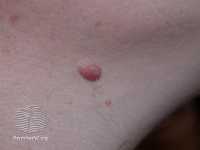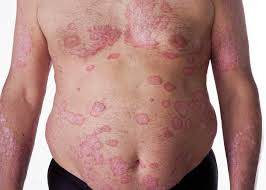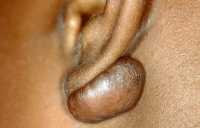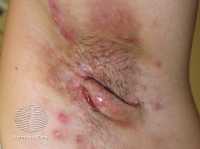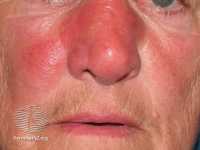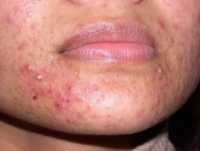Author Interviews, Dermatology, JAMA, Melanoma / 17.11.2019
Sun Protection Rising? Melanoma Incidence Decreasing in Young Adults
MedicalResearch.com Interview with:
Jennifer M. Gardner, MD
Clinical Assistant Professor of Dermatology
University of Washington School of Medicine
MedicalResearch.com: What is the background for this study?
Response: This study looked at age-specific differences of melanoma incidence in the United States. It was an observational study looking at population-based registry data extracted from the combined National Program of Cancer Registries-Surveillance Epidemiology and End Results United States Cancer Statistics (NPCR-SEER) database.
The overall take home message from this study is that though melanoma incidence has continued to climb in the past decade for both men and women, most of the increase is seen in adults greater than age 40 years of age. In contrast, melanoma incidence decreased in adolescents (ages 10-19 years of age) and young adults (ages 20-29) after peaking around 2004-2005.
Melanoma is more common in males in older individuals (older than 50 years of age) but in younger individuals (<50 years of age), melanoma is more common in females. According to a recently published JAMA-Otolaryngology paper by Bray and colleagues, there may be a subset of younger individuals where males are at a higher risk than females in regard to head and neck melanoma, and after that study was published we noted this to be true in our numbers, as well (we didn’t publish this in our study), further identifying a possibly “at risk” demographic within the younger age groups in addition to young women.
(more…)




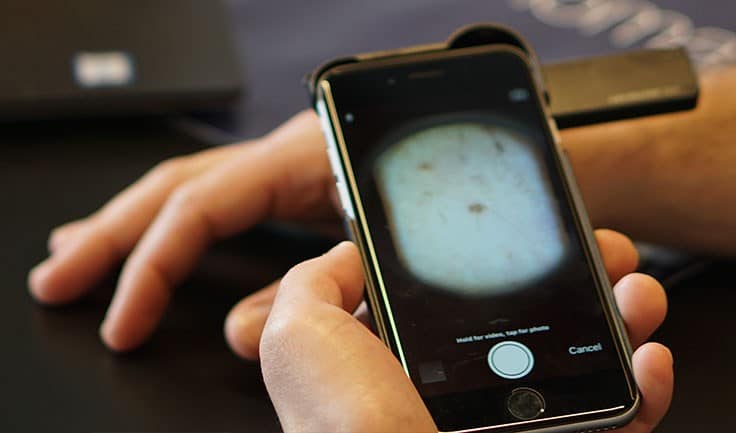
 Dr. Helen Marsden PhD
Skin Analytics Limited
London, United Kingdom
MedicalResearch.com: What is the background for this study?
Response: In this technology age, with the explosion of interest and applications using Artificial Intelligence, it is easy to accept the output of a technology-based test - such as a smartphone app designed to identify skin cancer - without thinking too much about it. In reality, technology is only as good as the way it has been developed, tested and validated. In particular, AI algorithms are prone to a lack of “generalisation” - i.e. their performance drops when presented with data it has not seen before. In the medical field, and particularly in areas where AI is being developed to direct a patient’s diagnosis or care, this is particularly problematic. Inappropriate diagnosis or advice to patients can lead to false reassurance, heightened concern and pressure on NHS services, or worse. It is concerning, therefore, that there are a large number of smartphone apps available that provide an assessment of skin lesions, including some that provide an estimate of the probability of malignancy, that have not been assessed for diagnostic accuracy.
Skin Analytics has developed an AI-based algorithm, named: Deep Ensemble for Recognition of Malignancy (DERM), for use as a decision support tool for healthcare providers. DERM determines the likelihood of skin cancer from dermoscopic images of skin lesions. It was developed using deep learning techniques that identify and assess features of these lesions which are associated with melanoma, using over 7,000 archived dermoscopic images. Using these images, it was shown to identify melanoma with similar accuracy to specialist physicians. However, to prove the algorithm could be used in a real life clinical setting, Skin Analytics set out to conduct a clinical validation study.
Dr. Helen Marsden PhD
Skin Analytics Limited
London, United Kingdom
MedicalResearch.com: What is the background for this study?
Response: In this technology age, with the explosion of interest and applications using Artificial Intelligence, it is easy to accept the output of a technology-based test - such as a smartphone app designed to identify skin cancer - without thinking too much about it. In reality, technology is only as good as the way it has been developed, tested and validated. In particular, AI algorithms are prone to a lack of “generalisation” - i.e. their performance drops when presented with data it has not seen before. In the medical field, and particularly in areas where AI is being developed to direct a patient’s diagnosis or care, this is particularly problematic. Inappropriate diagnosis or advice to patients can lead to false reassurance, heightened concern and pressure on NHS services, or worse. It is concerning, therefore, that there are a large number of smartphone apps available that provide an assessment of skin lesions, including some that provide an estimate of the probability of malignancy, that have not been assessed for diagnostic accuracy.
Skin Analytics has developed an AI-based algorithm, named: Deep Ensemble for Recognition of Malignancy (DERM), for use as a decision support tool for healthcare providers. DERM determines the likelihood of skin cancer from dermoscopic images of skin lesions. It was developed using deep learning techniques that identify and assess features of these lesions which are associated with melanoma, using over 7,000 archived dermoscopic images. Using these images, it was shown to identify melanoma with similar accuracy to specialist physicians. However, to prove the algorithm could be used in a real life clinical setting, Skin Analytics set out to conduct a clinical validation study.










